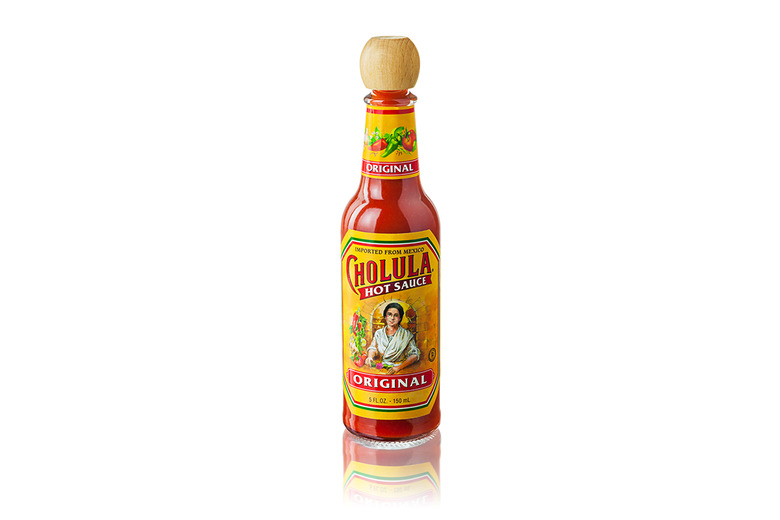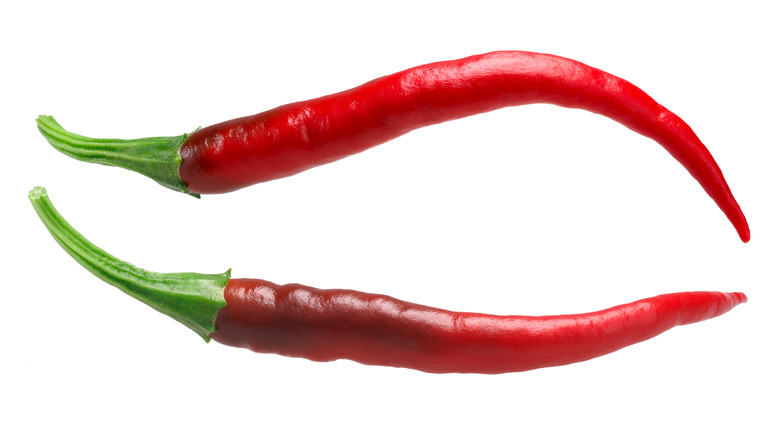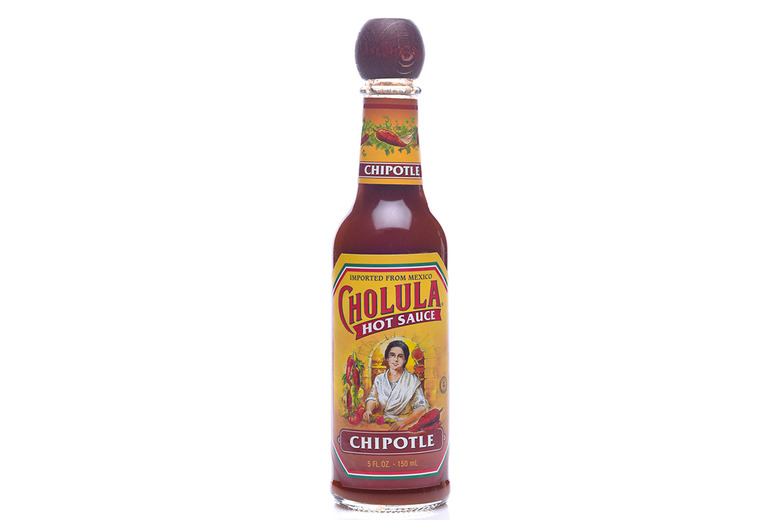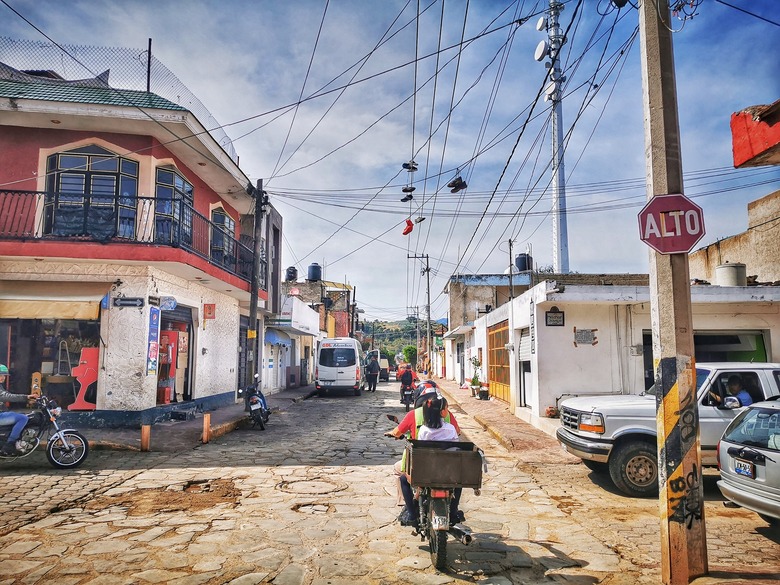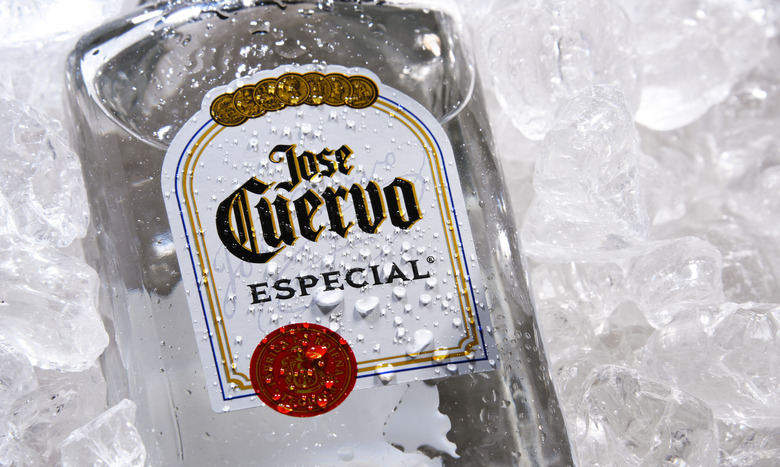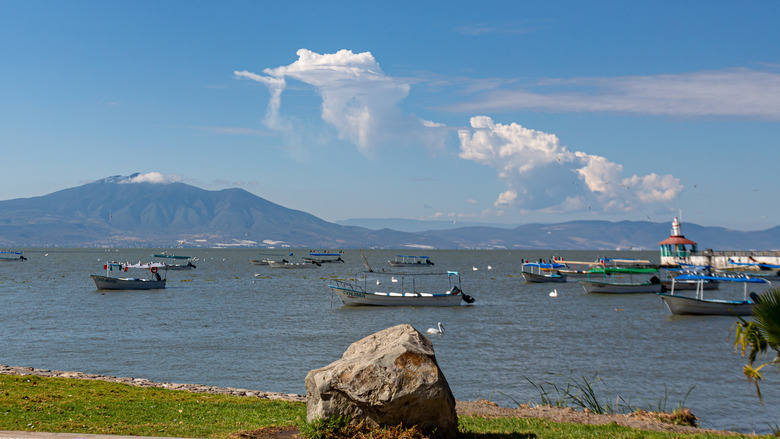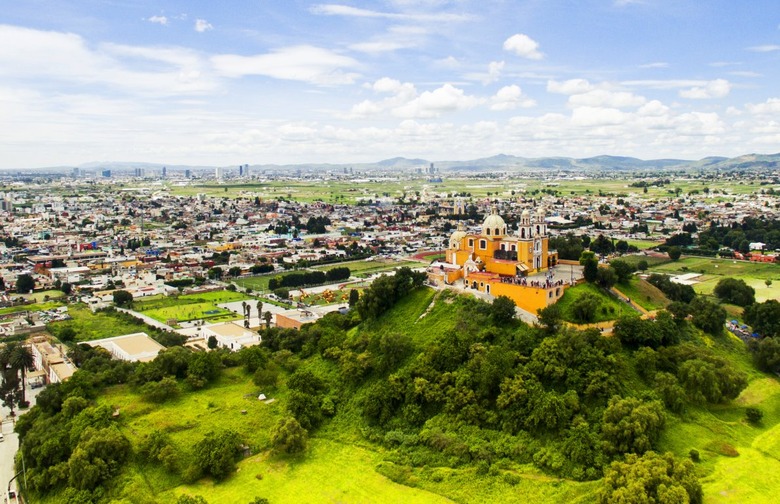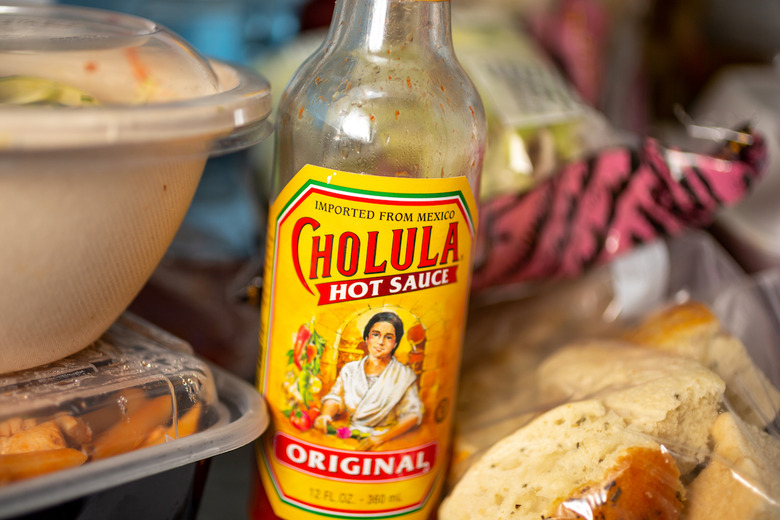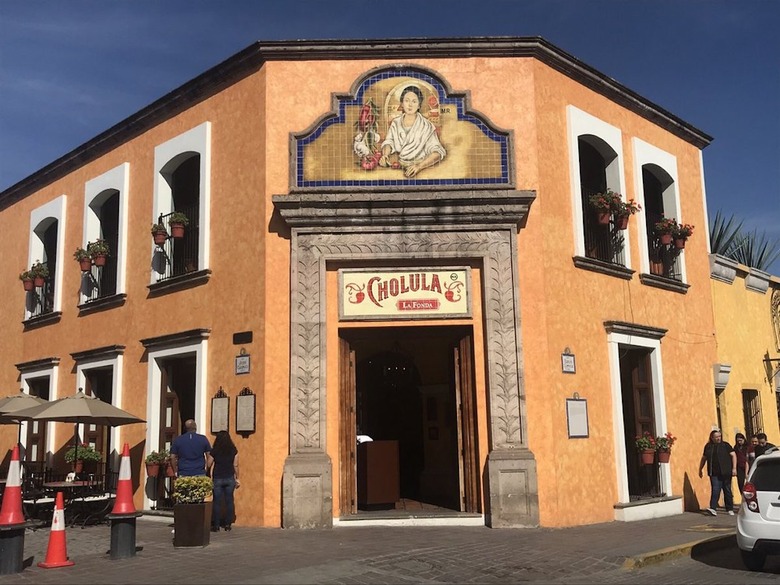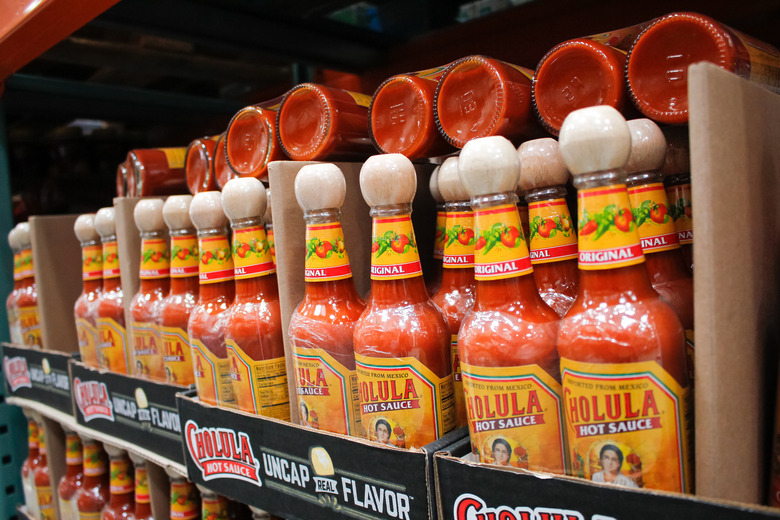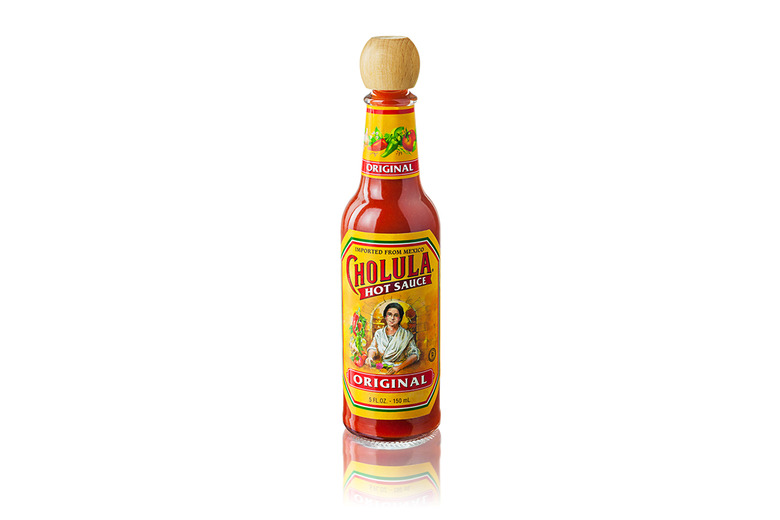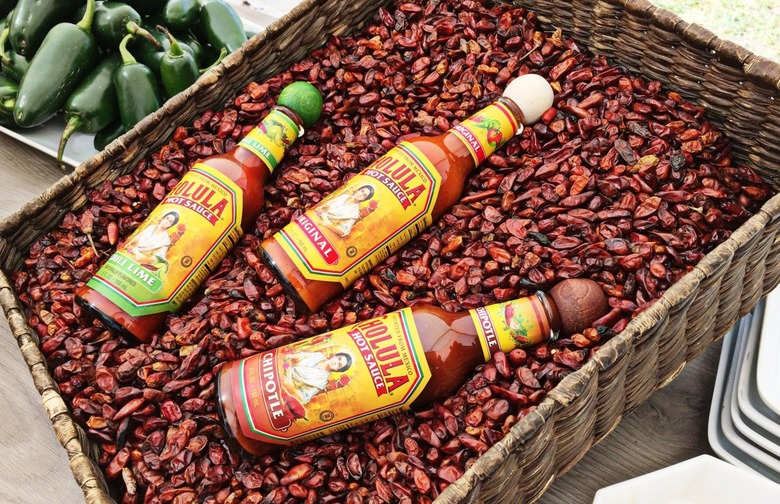11 Things You Didn't Know About Cholula Hot Sauce Gallery
Hot sauce might inspire more loyalty than any other condiment. Whether your favorite is a classic label, a hip discovery from your local international grocer or a handcrafted local habanero and carrot sauce, you probably keep the same bottle in your fridge or pantry at all times and slather it all over everything — and you panic if it starts to run dry.
Cholula, made in Mexico mainly from arbol chiles, is one of those cult-favorite hot sauce brands that certain people absolutely swear by, and it's also become a staple offering on restaurant tables and supermarket shelves all over the United States. But it hasn't actually been around in most of the U.S. for all that long, and most people don't know much about it or about the place it comes from.
That place is the state of Jalisco in western Mexico. Jalisco is the birthplace of mariachi music and tequila (Cholula is actually closely related to a famous tequila brand) and it's a great place to grow chiles. From the factory near the shores of Mexico's largest freshwater lake, that flavor is bottled and shipped to consumers — most of them outside Mexico.
If you're surprised to learn that Americans are thirstier for the taste of Cholula than people anywhere else, read on to find out 11 things you didn't know about the hot sauce.
The Original Flavor Comes From Arbol and Piquín Chiles
Cholula's pepper blend is selected carefully, mindful of culture, climate and flavor. The original flavor is derived mainly from chile de arbol, a small, slender pepper that grows well in the state of Jalisco, where Cholula is produced. Arbol chiles make up 80 percent of Cholula's pepper blend; the other 20 percent consists of piquín peppers, an even smaller, even spicier chile that commands a high market price because it can be difficult to grow.
There Are 5 Additional Flavors
While the original flavor accounts for 80 percent of Cholula's production, the company makes five other distinct varieties: Green Pepper, Sweet Habanero, Chipotle, Chile Lime and Chile Garlic. The green pepper version, based on jalapeño and poblano peppers, and the chipotle version, which includes smoky jalapeños alongside arbol and piquín chiles, are the most popular alternate flavors. The sweet habanero is the newest, first introduced in 2018.
Jalisco Is a Hot Sauce Hotbed
Cholula's home region is renowned for pepper cultivation, and the chile de arbol from Jalisco's highlands is famous both within Mexico and internationally. Other well-known hot sauces also claim Jalisco roots: The red shape on Valentina's label is actually an outline of the state, and the name of Tapatío is a term for a person from the state capital, Guadalajara — though Tapatío is actually made in California.
The Brand Is Part of the Jose Cuervo Family
Cholula shares the same owner as Jose Cuervo, the world's largest bottler of tequila, which also has roots in Jalisco (in the town of Tequila). Depending on your state laws, you might need to buy the ingredients at different stores, but Cholula and tequila together can make some pretty tasty cocktails; you can also use Cholula as an ingredient in sangrita, a spicy, limey concoction perfect for drinking alongside or mixing with tequila.
The Factory Is Near Mexico’s Largest Lake
Cholula is produced in Chapala, Jalisco, not far from the shores of Lake Chapala, the largest freshwater lake in Mexico. The factory works on batches of one flavor at a time and produces about 150,000 bottles in a day.
Cholula Is the Name of the Oldest City in North America
The name Cholula actually refers to a place nearly 400 miles away from the factory. Cholula the place has been inhabited for over two millennia; it was an important pre-Columbian trade and religious center and is home to one of the world's largest pyramids. The conquistador Hernán Cortés massacred the city's leaders in 1519 and replaced many temples with churches, but Cholula, now part of the Puebla metropolitan area, remains culturally significant and was named a UNESCO World Heritage site in 1987.
The Identity of the Lady on the Bottle Is a Mystery
Cholula representatives say their label is a portrait of a Puebla native known as "La Chila," who moved to Jalisco and became a beloved cook for the Cuervo family — but the brand doesn't provide any given name, details or timeframe for La Chila. So for all we can verify, she might just be clip art — or she might be Bob Saget, as some internet kooks believe. One thing that is certain: She seems super-chill, and you'd probably rather have her join you for dinner than Huy Fong's boastful sriracha rooster or the whip-wielding Texas Pete.
There’s a Cholula-Themed Restaurant in Tequila
Jose Cuervo is so confident about the hot sauce that they opened an entire restaurant adjacent to Cuervo's La Rojeña distillery on the main square in the town of Tequila. (Yes, there is a town of Tequila.) Cholula La Fonda's menu specializes in creative uses for the namesake sauce and for the local star crop, agave.
Cholula Has Only Been in the US Since 1989
Though Cholula can be found in most any of America's best supermarkets these days and is among the nation's best-selling condiments, its rise to prominence has been surprisingly rapid. Cholula has only been distributed since 1989 in the U.S. market — a virtual eyeblink in hot sauce years, considering some competitors like Crystal and Tabasco date back to the 1920s or even further.
They Sell More Bottles in the US Than in Mexico
Though every bottle of Cholula is still produced in Chapala, the company's worldwide success means it actually sells a lot more bottles internationally than in Mexico, and the biggest market is the U.S.
The Focus Is Flavor, Not Raw Heat
The manufacturers say Cholula checks in around 1,000 units on the Scoville scale — the accepted measure of pepper spiciness — roughly in the range of most other popular hot sauces. Cholula is formulated to be used on anything from tacos to mussels to sloppy Joes, and it's a lot easier to actually enjoy than any of the world's hottest hot sauces.
More From The Daily Meal:
America's Best Mexican Restaurants
11 Mexican Foods You Won't Find in Mexico
America's Unhealthiest Mexican and Tex-Mex Chain Restaurants
